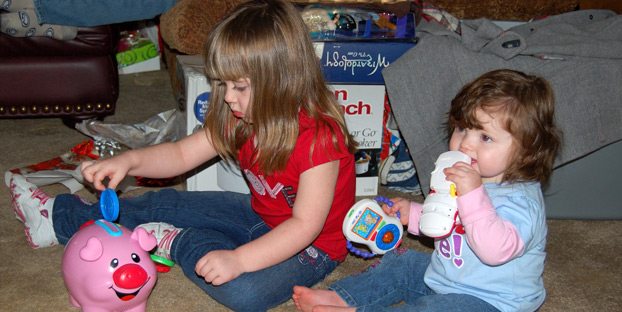The following blog was originally published in My Bank Tracker.
With the coming change of seasons, school bells will ring again and the youngsters return to the classroom. No matter what subjects your kids will be studying, high on their educational agenda should be managing their own money and financial affairs.
Most young Americans are lost when it comes to money management, according to the results of a financial literacy test given by the National Financial Educator’s Council. Students 15 to 18 years old who took the test scored an average of little more than 59 percent.
Students freely admit their financial ignorance. Nearly half of the teens polled by Opinion Research Corporation — 49 percent — reported feeling essentially clueless about money management. The survey also identified a big reason behind this lack of financial knowledge — 90 percent of teen respondents said they’re not being taught what they need to know about money management.
Financial educators say the best way to begin the process of learning about the everyday facts of financial life is to start at home. Involve your children in personal finance from an early age. Kids need real-world, personal application of the financial concepts you want them to learn
Practical suggestions for learning
Set a good example. You can tell your kids that money is for three things — saving, spending and sharing — but unless they see you doing that, the lesson probably isn’t going to sink in. Support at home what your kids are learning in school. Talk to your child’s teacher about what he or she is learning in the classroom and how those lessons can be reinforced at home.
It’s important to put things in context for kids. You may wish your children to know what the family’s household income is and how much you pay monthly for the family mortgage.
Instill a habit of saving early. Open a savings account for your child and make regular visits together to the bank to deposit money, even if the amount each time is small. Set an achievable savings goal based on your child’s age — it’s about making saving money a habit.
Give your child the resources to practice with. You can’t teach them about money without giving them some, so an allowance of some sort is in order. It may involve a family discussion and decision on how much can be afforded and whether the allowance should be tied to chores.
What they need to know to start banking
Understand where the money goes. If they don’t know how much they’ve spent and on what, they won’t know how much they have left to afford the things they want. There are free smart phone apps available that will keep track for them with barely any work on their part.
A budget is just a plan for their money. Once they know where their money goes, a budget maps out how much money they owe every month, and how much money they have left. It’s not restrictive, like a diet — it’s just a way to make sure they aren’t spending money they don’t actually have.
A checking account is different from a savings account, so don’t treat it as one. A checking account earns little or no interest and keeps cash at hand to pay bills or make cash withdrawals. they shouldn’t keep more money there than they need for their bills, plus a buffer. A savings account earns a bit of interest and is meant to hold money for the longer term.
Never pay ATM or checking fees. There are plenty of banks out there with convenientlylocated in-network ATMs and checking accounts without fees. Paying for either simply means they didn’t do the two-minute Google search to find a better option.
The basic concepts of financial life
They shouldn’t seize every deal that comes their way. If they can’t see the strings on a financial offer, they should take a closer look.
Read the fine print on that student loan. Students should know the terms of their agreements. It might very well affect how they choose to spend their time while in school.
Don’t get a credit card unless they can pay the bills. A prepaid card might be a good option to get used to using a card without the danger of getting into consumer debt.
Keep their debts to a minimum. If they keep their fixed payments as few as possible it will insulate them a little from unforeseen eventualities.
They might get a job. It will get them used to managing a little bit of their own money.
Who’ll do the teaching?
The President’s Advisory Council on Financial Literacy wrote: “By almost any measure, today’s schoolchildren are ill-equipped to understand personal finance and make their way in the modern financial world. Their rising debt and debt problems, along with their poor inclination to save, substantiate what the test scores show. Meanwhile, most students still graduate from high school without any formal classroom education in personal finance.”
In the aftermath of the global financial crisis there is a growing interest in requiring more financial education in grade school, middle and high schools.
But until schooling in personal finance becomes dependable and universal, the most important lessons about money will still be taught at home, where the role of teacher falls primarily on parents, guardians and other adults.
If that means you’ve inherited the responsibility — consider making financial education a shared experience. We all have something to learn when it comes to money.
About the author: MyBankTracker is your one stop destination for banking and financial news and is one of the strongest financial communities on the web. We are dedicated to bringing the most up to date and relevant banking information to consumers. You can also Compare daily bank reviews and top banking rates.






0 Comments